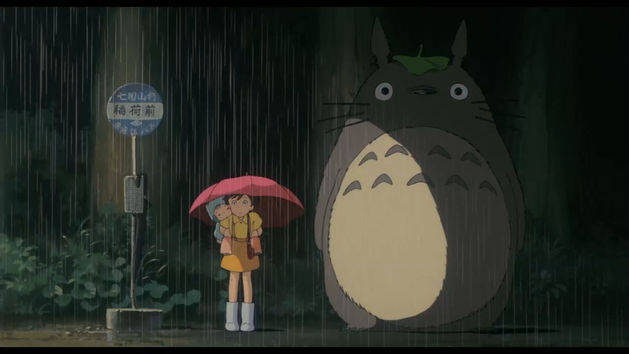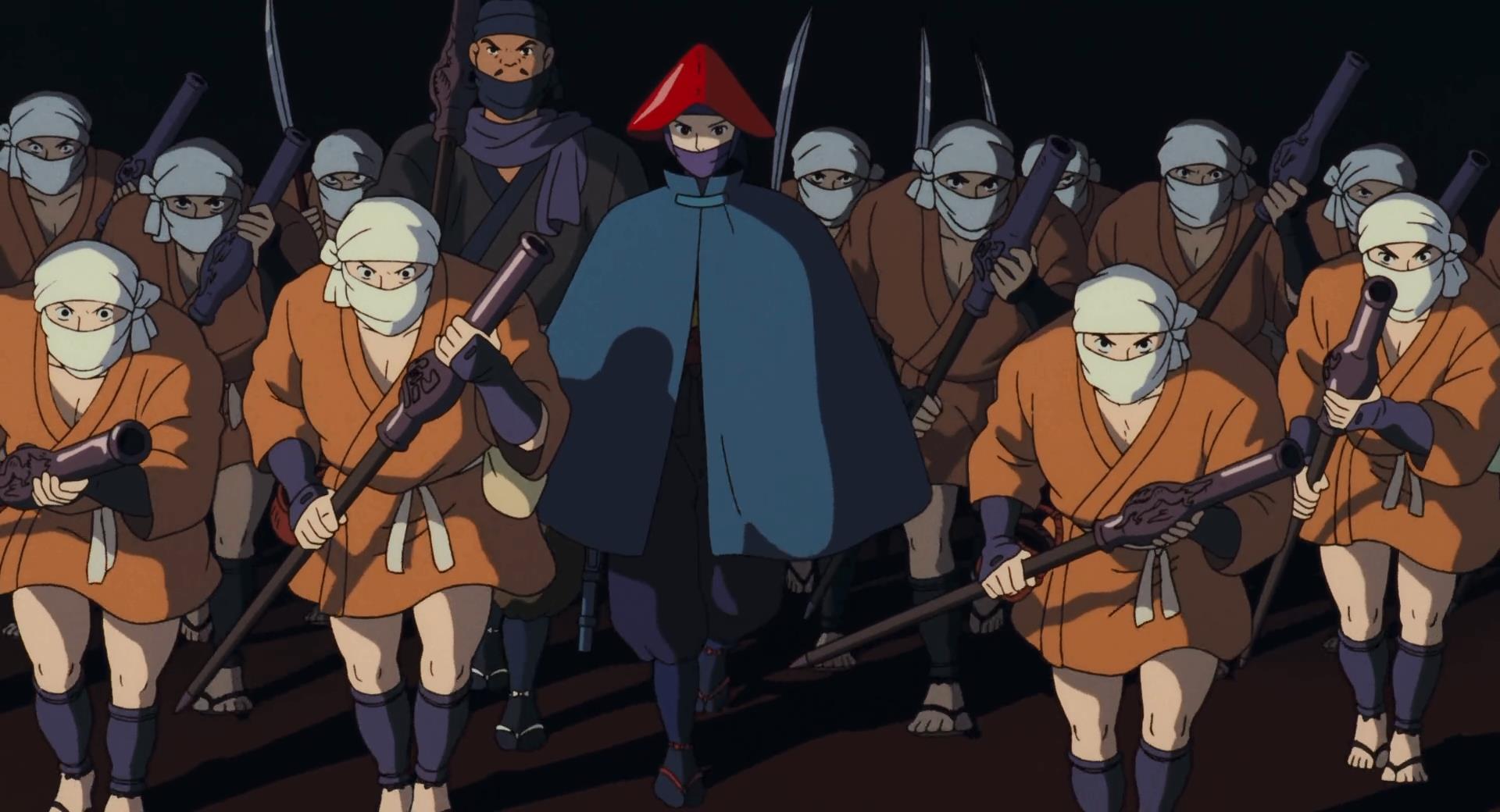It has been more or less three years since Hayao Miyazaki’s last feature film, The Wind Rises, was released and until now I miss his presence in the film industry.
Hayao Miyazaki, in my opinion, is not only one of the best animated filmmaker in Japan but the entire world. You could watch his movies at any period of your life—whether you’re nine or twenty-nine—and they will still resonate with you.
I mean, I’ve probably watched most of his movies more than a dozen times each for the past six years and there are still new things I would learn as I watch one of them for the enth time.
I planned on creating a tribute article of sorts but I felt, with my little insight, I would never do him or his films justice. Which is why I’m doing this Kate-style: a list of lessons.

Since some folks out there are probably participating in NaNoWriMo, I thought I can help out in the inspiration part with these lessons on storytelling. I freaking love stories anyway, whatever medium is used, so this is also me fangirling about storytelling. And I’m going to casually insert some life lessons in there too, if I can help it. Because you all probably know how obsess I am with life lessons, right? (If you hadn’t, now you do ;))
Whoa, that’s like using one stone to hit two birds and eat a cookie! #Winning.
1 | Learning to Pause
Don’t get me wrong, there’s something thrilling about action-packed stories. I love them and my regular praise for Rick Riordan books is evidence enough. But I also love how Miyazaki has this short “breathing room” after every excitement. A space where we see his characters simply reflect their circumstances and we don’t really need any explanation or dialogue. We just connect with them.

I mean, who could forget this scene?
In a sense, you could also apply this to everyday life. I understand the appeal of living in the fast lane but pausing every once in a while, giving yourself a little breathing room in your life, won’t be so bad. Personally, I like plunging on to a project or some task and give myself a little break after. And when you think about it, isn’t that what the Pomodoro technique is all about? *le Eureka gasp*
2| Not Really Happily Ever After
Growing up, I have always gravitated towards happy endings. The hero saved the princess, the cursed town restored, yada yada. I’ve only started to appreciate the not-so happy ones in my late teens, have only realized how closer they are to reality.

And in most of Miyazaki’s films, you would not get a completely happily ever after. I mean, everyone’s happy, sure. But some things aren’t tied up tightly into a pretty ribbon. While Jiji did return to Kiki’s side in Kiki’s Delivery Service, he still can’t talk.
Things don’t always go exactly the way we want them to. And that’s okay. 🙂
3 | Incredible Character Depth
Okay, by far, this is one aspect in a Hayao Miyazaki film that I like the most. (Which is why I’m going to have a short fangirling moment below mehehe) And if you know me, that’s not a surprise at all, considering I always talk about character depths in my book reviews.
The thing is, Hayao Miyazaki’s characters all have incredible depths. And I mean incredible!
Princess Mononoke’s Lady Eboshi is not the cruel, heartless leader of Irontown because we see her compassion towards her workers, women from brothels and lepers—people who have been looked down by the rest of society. The titular character of Howl’s Moving Castle may be one of the film’s good guys but he also bears a vain and immature attitude.

(Image via Nefarious Reviews)
In Miyazaki’s world, there is no purely good guy or a purely bad guy. And it pays to realize that this is true for our world too.
Everyone has a little good and a little evil in them and in the end, you can’t sum up a person by one act. And anyway, that just seems unfair, ain’t it?
4 | Emotions and Logic
Fun fact: did you know that Miyazaki creates scenes through the emotion they bring? He and the rest of his animators actually come up with the storyboard afterward.
I’ll give you a minute if you’re mind’s blown.
You okay now? Okay.
And hey, don’t worry. When I learned about that the first time, I was like, “*whispers* NO FREAKING WAY.”

The Storyboard for Ponyo (via Creative Stuff)
Maybe it’s because of this that Hayao Miyazaki’s films always bring up a surge of emotions whenever someone (me) watches them. Maybe this is why we (I) could connect to the story and the characters so much.
I think this comment from RogerEbert.com could sum up my thoughts on this one:
“He’s (Miyazaki) always made us realize that human/dramatic motivation is too complex for either-or reasoning.”
While I really want to ponder upon Miyazaki’s thoughts on the complexity of humanity, the point is Hayao Miyazaki does a huge part of his work emotionally, something that I think is important in art in general. And it worked well on him.
In our case, we have to find what works for us. I, for one, am the kind of person who has to balance both emotion and logic in my life. I can’t function in total intuition nor in total organization (a long story I’ll tell some other time) so I need balance.
So that’s it! These are the storytelling lessons I got from Hayao Miyazaki’s films along with some life lessons as well. While we’re at it, here are two amazing videos about Hayao Miyazaki that I’ve watched (for like a hundred times now):
Hayao Miyazaki Tribute Video in 3D by Dono (Vimeo) – A 3-minute tribute video of all of Hayao Miyazaki’s works. This brought me surrounded by my own lake of tears. Like the feels…
Hayao Miyazaki – The Essence of Humanity by Channel Criswell (YouTube) – A 16-minute video essay about how Hayao Miyazaki understands the complexity of human emotions. This is so amazing, I downloaded it in my YouTube app for offline watching. <3
Have you watched any Hayao Miyazaki films? Which one(s) is (or are) your favorite? What are your thoughts on his films as a whole? Share them on the comments or you can tweet it! (Yay for options!)
Now excuse me, I have to go and binge-rewatch some of the movies I just mentioned above…
(I didn’t know you could crave for movies)
(Crap, now that I thought of crave, I’m craving for ice cream too)
Happy watching, awesome peeps!

 Nausicaä of the Valley of the Wind is set in a post-apocalyptic world where majority of the world is engulfed in the Toxic Jungle, a forest given birth by the apocalyptic war, Seven Days of Fire. It tells the story of a young princess named Nausicaä who gets involve in a conflict with the Tolmekia, a kingdom who attempts to eradicate the Toxic Jungle and its giant mutant insect inhabitants with an ancient weapon.
Nausicaä of the Valley of the Wind is set in a post-apocalyptic world where majority of the world is engulfed in the Toxic Jungle, a forest given birth by the apocalyptic war, Seven Days of Fire. It tells the story of a young princess named Nausicaä who gets involve in a conflict with the Tolmekia, a kingdom who attempts to eradicate the Toxic Jungle and its giant mutant insect inhabitants with an ancient weapon. Ultimately, Nausicaä of the Valley of the Wind, has earned its place among the best Hayao Miyazaki films I’ve watched. Probably fourth, after Princess Mononoke, Spirited Away, and The Wind Rises. Of course, I love all the films Hayao Miyazaki wrote and directed excluding those that I have yet to watch (the shorts and Porco Russo, mainly). It still saddens me that I will never be able to see a new work of his.
Ultimately, Nausicaä of the Valley of the Wind, has earned its place among the best Hayao Miyazaki films I’ve watched. Probably fourth, after Princess Mononoke, Spirited Away, and The Wind Rises. Of course, I love all the films Hayao Miyazaki wrote and directed excluding those that I have yet to watch (the shorts and Porco Russo, mainly). It still saddens me that I will never be able to see a new work of his.